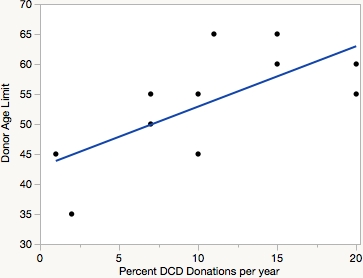Donor and Procedural Variability in DCD Liver Transplant: Is It Time to Come to a Consensus?
Department of Surgery, University of Rochester Medical Center on Behalf of the IDOL Consortium, Rochester, NY.
Meeting: 2018 American Transplant Congress
Abstract number: A287
Keywords: Cadaveric organs, Donors, Ischemia, Liver transplantation, non-heart-beating
Session Information
Session Name: Poster Session A: Liver: MELD, Allocation and Donor Issues (DCD/ECD)
Session Type: Poster Session
Date: Saturday, June 2, 2018
Session Time: 5:30pm-7:30pm
 Presentation Time: 5:30pm-7:30pm
Presentation Time: 5:30pm-7:30pm
Location: Hall 4EF
Background:
Donation after cardiocirculatory death liver transplantation (DCD LT) has re-emerged in part because of insufficient grafts for patients on waiting lists. Unfortunately, DCD LT has demonstrated higher rates of cholangiopathy and primary non-function. In an effort to improve outcomes from DCD LT, the IDOL consortium was established, comprised of high volume DCD LT centers in the US. Our group has previously demonstrated a great variability in incidence of post DCD LT cholangiopathy despite similar graft selection criteria. Thus, in order to understand differences between center's DCD LT practices a survey was distributed.
Methods:
IDOL consortium institutions participated in an electronic survey. Questions focused on donor and recipient characteristics, as well as organ procurement and implantation characteristics.
Results:
There is variability by center with the percent DCD LT ranging from <1% to 20%. One third of centers limit their DCD donors to age 50 or younger, while one third expand their criteria as high as 60 years of age; this latter group tended to perform higher volumes of DCD LT (figure 1). Most centers exclude recipients for retransplantation, while 50% exclude due to PVT. Cut off values for WIT and functional warm ischemia time (fWIT) varied between institutions. Individual center's fWIT definition varied considerably from time maximums to hemodynamic parameters. Procurement steps differed subtly between institutions; for example, some centers prioritize aortic cross clamp, while others focus on arterial flushing or caval venting. Most centers do not routinely biopsy grafts (10/12). Centers prefer UW perfusate. A majority of institutions prefer portal reperfusion prior to arterial anastomosis (11/12).
Conclusions:
Heterogeneity remains between centers performing DCD LT, specifically in donor selection and graft procurement, with centers who perform a higher proportion of DCD LT having more aggressive criteria. Additionally, centers use starkly different criteria to define fWIT. Developing consensus best practices will aid in better understanding inter-institutional outcomes with DCD LT.
CITATION INFORMATION: Ruffolo L., Balceniuk M., Hernandez Alejandro R. Donor and Procedural Variability in DCD Liver Transplant: Is It Time to Come to a Consensus? Am J Transplant. 2017;17 (suppl 3).
To cite this abstract in AMA style:
Ruffolo L, Balceniuk M, Alejandro RHernandez. Donor and Procedural Variability in DCD Liver Transplant: Is It Time to Come to a Consensus? [abstract]. https://atcmeetingabstracts.com/abstract/donor-and-procedural-variability-in-dcd-liver-transplant-is-it-time-to-come-to-a-consensus/. Accessed December 22, 2025.« Back to 2018 American Transplant Congress

